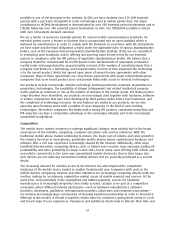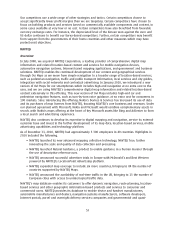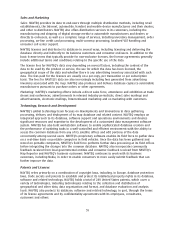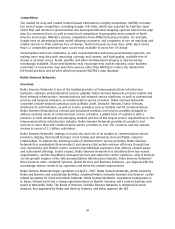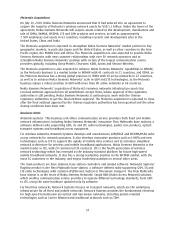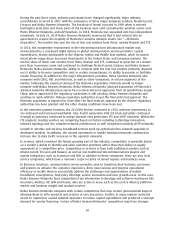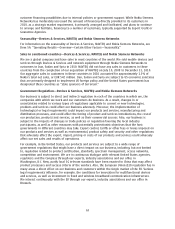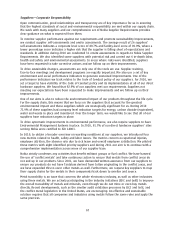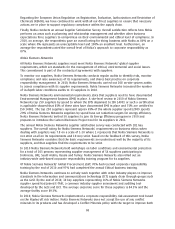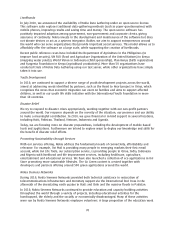Nokia 2010 Annual Report Download - page 61
Download and view the complete annual report
Please find page 61 of the 2010 Nokia annual report below. You can navigate through the pages in the report by either clicking on the pages listed below, or by using the keyword search tool below to find specific information within the annual report.communications service providers and public and corporate customers. It works in close collaboration
with the regional marketing teams, sales, the business units, the corporate strategy team and human
resources.
The marketing and communications unit is also responsible for a consistent brand strategy including
corporate image, positioning and messaging across all customer and internal communications. These
include the Nokia Siemens Networks public website, the extranet site and the intranet site. It
develops corporate assets such as advertising and events, corporate videos, customer presentations
and collateral and marketing programs that communicate what differentiates Nokia Siemens
Networks from its competitors for use by the regional marketing teams as well as global functions. It
creates, executes and measures corporate advertising and crossbusiness unit marketing campaigns as
well as joint marketing programs with communication service providers.
The marketing and communications unit manages Nokia Siemens Networks’ participation in multi
regional industry events such as Mobile World Congress and Broadband World Forum, including
speaking opportunities, stand themes and demonstrations, advertising and sponsorships.
Production
Nokia Siemens Networks’ operations unit handles the supply chain management of all Nokia Siemens
Networks’ hardware, software and original equipment manufacturer (OEM) products. This includes
supply planning, manufacturing, distribution, procurement, logistics, demand/supply network design
and delivery capability creation in product programs.
At the end of 2010, Nokia Siemens Networks had eight manufacturing facilities worldwide: three in
China (Beijing, Shanghai and Suzhou), one in Finland (Oulu), two in Germany (Berlin and Bruchsal),
and two in India (Kolkata and Chennai).
In April of 2010, Nokia Siemens Networks started manufacturing of 3G mobile communications
infrastructure in its Chennai facility to enable key customers in India to roll out 3G services faster.
With this, Nokia Siemens Networks became the first vendor of telecommunications infrastructure to
manufacture 3G products locally.
Nokia Siemens Networks works with bestinclass manufacturing service suppliers to increase its
flexibility and optimize costs. Approximately 29% of Nokia Siemens Networks’ production is
outsourced.
Certain components and subassemblies for Nokia Siemens Networks’ products, such as company
specific integrated circuits and radio frequency components, are sourced and manufactured by third
party suppliers. Nokia Siemens Networks then assembles these components and subassemblies into
final products and solutions. For selected products and solutions, suppliers deliver goods directly to
Nokia Siemens Networks’ customers. Consistent with industry practice, Nokia Siemens Networks
manufactures telecommunications systems on a contractbycontract basis.
Nokia Siemens Networks generally prefers to have multiple sources for its components, but in certain
cases it sources some components from a single or a small number of selected suppliers. These
business relationships are stable and typically involve a high degree of cooperation in research and
development, product design and manufacturing to ensure optimal product interoperability.
Research and Development
The Chief Technology Office focuses on research, standardization, intellectual property rights and
innovation. It cooperates with universities, research institutes, leading industry partners and other
industry cooperation bodies worldwide. The focus is on leading edge technologies three or more
years out.
Nokia Siemens Networks’ business units focus on understanding short and mediumterm customer
needs and the overall development of the market to define requirements for product and solution
60



